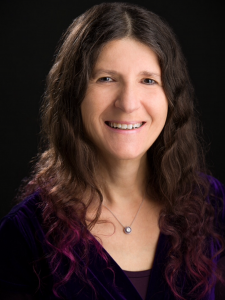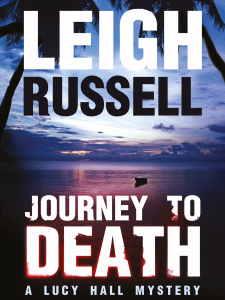Women In Crime Fiction

Leigh Russel
Women in early crime fiction are often placed in the role of helpless ‘damsel in distress’. This is not inevitably the case. Apart from his nemesis Moriarty, the one person who succeeds in outwitting Sherlock Holmes through sheer strength of character and intelligence is a woman, Irene Adler. But she is perceived as outside the norm.
Holmes himself refers to afterwards as ‘The Woman’. In Conan Doyle’s stories, women in general were merely passive potential victims. A male villain and detective drove the narrative.
With Christie’s Miss Marple, women began to play a more significant role in the genre. Too old to be of romantic interest as a female character, her advanced years gave her not only perception, but also a licence to observe without attracting notice. She was perfectly placed to look into crimes, and led the way for later more strident female investigators like Lisbeth Salander.
Writing my debut crime novel in 2008, I imagined my protagonist, Geraldine Steel, as the next generation from Lynda La Plante’s Jane Tennison. In Prime Suspect, first published in 1991, Tennison struggled to make her way in the male dominated world of the police force. Things have moved on from there in the real world. Over 50% of senior positions within the police force are now occupied by women. This change is reflected in crime fiction, where female detectives no longer battle within a male dominated institution, and banter is replacing chauvinism.
The victim in crime fiction has undergone a similar development. In my books there are male victims as well as female ones, male characters who are bullied, stalked and abused, as well female victims of such treatment, and my killers are a mixture of male and female characters. Not only does this seem fair, but it also helps to keep readers guessing. No character is free from suspicion.
It may surprise some readers to know that when I began writing, my detective Geraldine Steel started out as a middle-aged man, influenced I think by Reginald Hill’s Dalziel and Ruth Rendell’s Wexford. Part way through the first draft of my debut, Cut Short, I made the change to a female protagonist. With a woman I felt I was on home ground, and the writing was easier.
In the early books in the series, Geraldine works with a male sergeant, Ian Peterson. This allowed for a faint frisson of sexual tension between the two characters as their friendship developed but, more importantly, it made writing conversation between my two detectives easier, as I could distinguish a speaker with an unobtrusive ‘he said’ or ‘she said’.
 As my books grew in popularity, a spin off series for Geraldine’s sergeant was launched. So I found myself writing books with a male protagonist after all. While I was considering Ian’s thought processes, and how to develop his character, my husband selflessly offered to take me to as many football matches as I needed – purely for the purposes of research, of course.
As my books grew in popularity, a spin off series for Geraldine’s sergeant was launched. So I found myself writing books with a male protagonist after all. While I was considering Ian’s thought processes, and how to develop his character, my husband selflessly offered to take me to as many football matches as I needed – purely for the purposes of research, of course.
We were discussing which team my detective might support, when my son-in-law pointed out that was a stereotype. He was right. So my detective is not a football supporter, and he never attends a match. Football is never mentioned in the books. In fact Ian’s gender has had very little impact on his character. He is simply a person, like my female detective, doing his best in a difficult job.
Starting a series with my new heroine, Lucy Hall, I naively supposed this would not pose any such challenges for me. I can just about remember what it’s like to be young, and I’m a woman. I quickly realised was that the world in which Lucy Hall is living in her twenties is very different to the world I knew when I was that age.
When I was in my twenties, we had no internet, and no mobile phones. Apart from the changes in technology, attitudes and assumptions were different. This was the pre-Thatcher era, before punk and budget airlines, and before the Channel Tunnel. Feminism was around, but gender equality in the workplace was not yet mainstream. So life poses different challenges for Lucy to those that I faced in my twenties.
So there are challenges for a writer whatever the gender or age of their protagonist, and the problems can be unexpected. When you write a book, as with almost everything in life, you just have to set off and hope for the best!
—
Journey to Death is the first title in her new Lucy Hall series published by Thomas and Mercer. Girl in Danger is out in September.
Links to buy all Leigh’s books, together with links to her Facebook and twitter pages, can be found on her website http://leighrussell.co.uk
Category: Contemporary Women Writers, On Writing
























An interesting and informative article by Leigh Russell, as always. I’m not a writer, but I can appreciate all the comments made and, being of “a certain age”, can relate to the passage relating to growing up without technology as we know it today.
Yes, women have always had an important role in life, although many will be reluctant to admit it, but during more recent years, a great number of women occupy senior positions in the workplace, including Government……and why not? To be honest, I found that having a female boss at one stage during my pre retirement years, showed me that, in many cases, women are more organised, whilst being more determined and ruthless. It’s as if they feel that they still have to prove something to their male colleagues. This is something that should not now have to do.